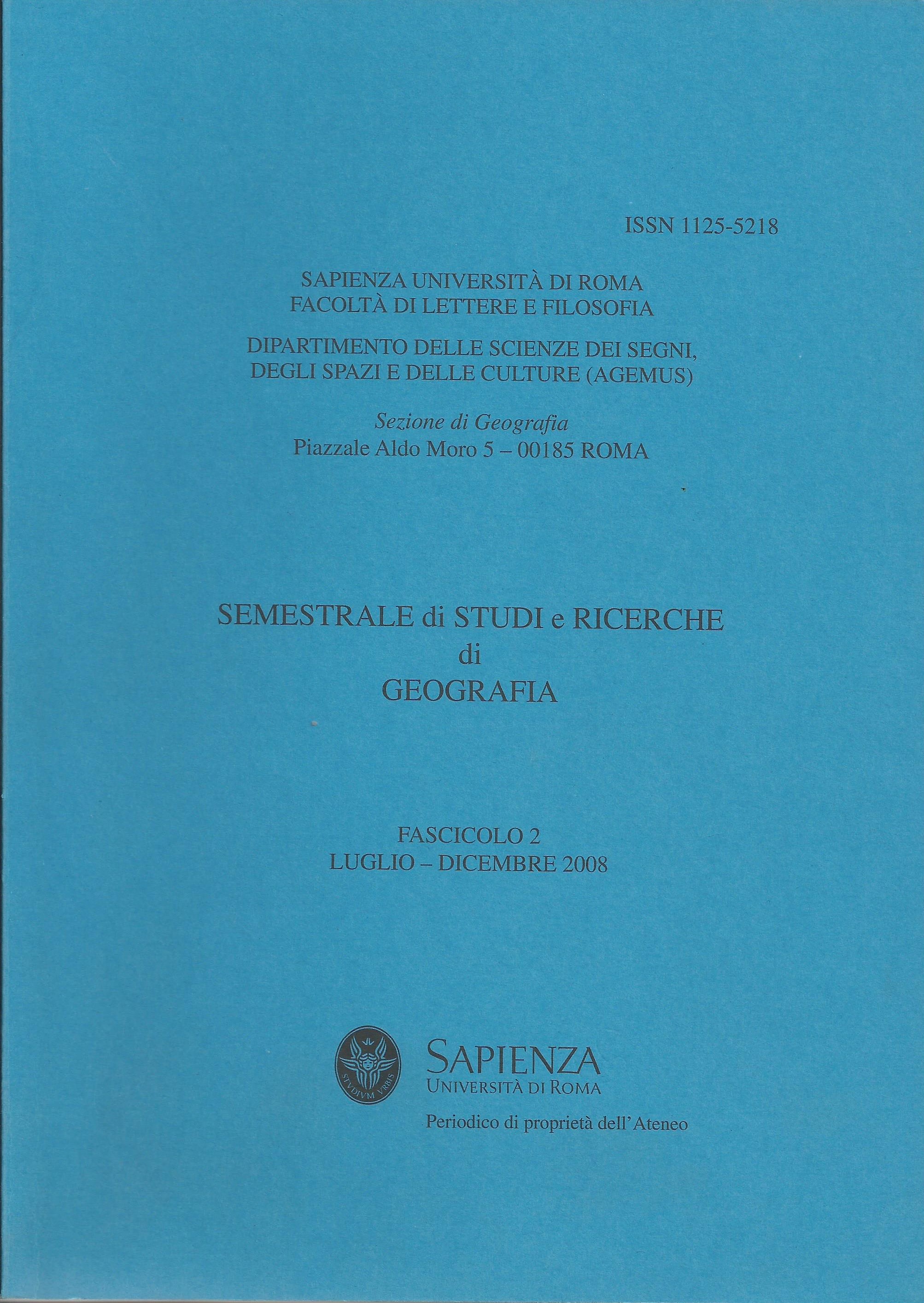Modelli redistributivi della popolazione per analisi geografiche a scala regionale: il caso del periurbano di Roma
DOI:
https://doi.org/10.13133/1125-5218.15303Abstract
In relation to socio-economical and demographic issues, the possibility of setting out information, in a much more detailed form than the common groupings found in national population censuses, has represented a stimulating field of investigation for some years. The creation of a raster model for any socio-economical index foresees the application of a particular form of the technique known as areal interpolation, with the census data added a posteriori over the covers classified by images (Landsat TM and/or SPOT). The main objective of this work is the experimental application of a classifying method that is able to enter all information deriving from the spatial data of the census together with those deriving from remote sensing in urban areas, for zones which have their administrative boundaries adjacent to the municipality of Rome. From an interpretative spatial analysis point of view, this method offers several useful hints towards interpreting the existing “urban” elements.
En matière de questions socio-économiques et démographiques, la
possibilité de disposer d’une information beaucoup plus précise que
les habituels groupements de population proposés par les recensements
nationaux, s’est révélée, durant des années, un stimulant domaine de recherche. La création d’une trame modèle pour tout index socio-économique prévoit la mise en place d’une forme spécifique de la
technique connue sous le nom d’interpolation des zones, où les
données du recensement sont ajoutées a posteriori sur les zones répertoriées par images (Landsat TM et/ou SPOT). Le principal objectif de ce travail est la mise en place expérimentale d’une méthode de classification susceptible de tenir compte à la fois des informations qui proviennent des données spatiales du recensement et de celles issues de l’ancien bon sens en zones urbaines, dans des zones qui ont leurs frontières administratives contiguës à celles de la municipalité de Rome. Du point de vue de l’analyse interprétative spatiale, cette méthode offre de nombreuses et utiles suggestions pour comprendre les éléments “urbanistiques” existants.
Downloads
Issue
Section
License
Gli autori che pubblicano su questa rivista accettano le seguenti condizioni:- Gli autori mantengono i diritti sulla loro opera e cedono alla rivista il diritto di prima pubblicazione dell'opera, contemporaneamente licenziata sotto una Licenza Creative Commons - Attribuzione che permette ad altri di condividere l'opera indicando la paternità intellettuale e la prima pubblicazione su questa rivista.
- Gli autori possono aderire ad altri accordi di licenza non esclusiva per la distribuzione della versione dell'opera pubblicata (es. depositarla in un archivio istituzionale o pubblicarla in una monografia), a patto di indicare che la prima pubblicazione è avvenuta su questa rivista.
- Gli autori possono diffondere la loro opera online (es. in repository istituzionali o nel loro sito web) prima e durante il processo di submission, poiché può portare a scambi produttivi e aumentare le citazioni dell'opera pubblicata (Vedi The Effect of Open Access).


